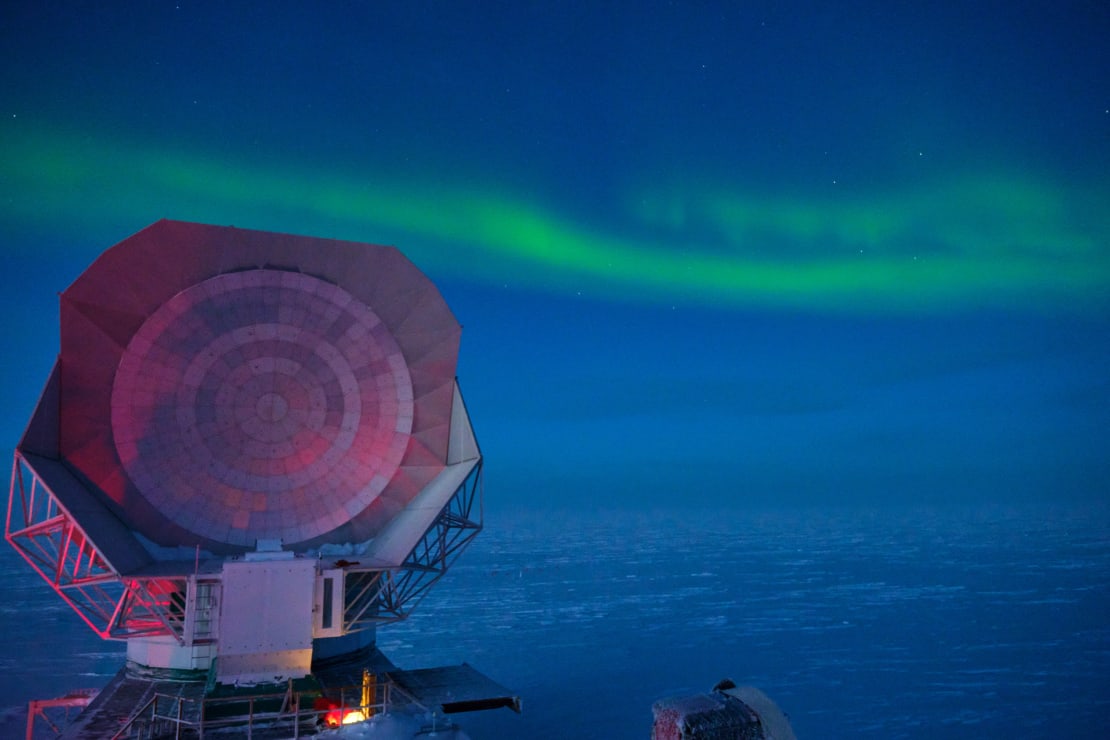
Even though sunset is always a slow and gradual process at the South Pole, it does seem like the “darkness” comes all of a sudden. Last week, those at the Pole were treated to the first large aurora of the season. In the image above, the aurora spreads across the sky as a long horizontal green band, with the South Pole Telescope (SPT) faintly lit in the foreground. It was a busy week of winterovers helping winterovers. First, the SPT winterovers needed help in temporarily removing mirrors to accommodate the Event Horizon Telescope, a worldwide effort aimed at creating an image of a black hole from observations of telescopes distributed around the world. IceCube’s winterovers, Connor and Kalvin, joined other volunteers in tackling that operation, and then in turn got volunteers to help them in moving the IceACT telescope mount out on sleds to the surface array from the IceCube Lab (ICL), in the second image down—see how dark it was! After the move, while they warmed up in the ICL, Connor and Kalvin gave a lab tour for folks who hadn’t visited before. Besides all this activity, it was a week packed with other activities, including not one, not two, but three (!) outreach webcasts that Connor and Kalvin participated in, giving presentations to student groups in both the US and Europe.



